Co-infection of SARS-CoV-2 and influenza A/B among patients with COVID-19: a systematic review and meta-analysis
- PMID: 39891054
- PMCID: PMC11783914
- DOI: 10.1186/s12879-025-10521-5
Co-infection of SARS-CoV-2 and influenza A/B among patients with COVID-19: a systematic review and meta-analysis
Abstract
Background: The severe acute respiratory syndrome coronavirus 2 (SARS-CoV-2) that causes coronavirus disease 2019 (COVID-19) is a public health problem and may result in co-infection with other pathogens such as influenza virus. This review investigates the co-infection of SARS-CoV-2 and influenza A/B among patients with COVID-19.
Methods: This meta- analysis included 38 primary studies investigating co-infection of SARS-CoV-2 with influenza in confirmed cases of COVID-19. The global online databases were used to identify relevant studies published between December 2019 and July 2024. Data analysis was performed using STATA Ver. 17 software, and standard errors of prevalence were calculated using the binomial distribution formula. Heterogeneity of study results was evaluated using the I-square and Q index, and publication bias was examined using the Begg's and Egger's tests, as well as funnel plot. A random effects model was used to determine prevalence rates, and a forest plot diagram was used to present results with 95% confidence intervals. In addition, sensitivity analyses were performed to check the impact of each primary study on the overall estimate.
Result: The analysis found that the prevalence of influenza in co-infected patients at 95% confidence interval using a random effect model was 14% (95% CI: 8-20%). Significant heterogeneity was observed in the random-effects model for influenza A, 11% (95% CI: 5-18%) and B, 4% (95% CI: 2-7%) in co-infected patients. The highest prevalence of influenza A/B (21%), influenza A (17%) and influenza B (20%) was shown in Asia and Europe respectively. Subgroup analysis by study year showed that the co-prevalence of COVID-19 and influenza A/B was similar in the pre-2021 and post-2021 time periods, at 14% (95% CI: 5-23%) for pre-2021 and 6-22% for 2021 and post-2021. Also, the overall prevalence of influenza A and B in COVID-19 patients is 11% and 4%, and there was no significant difference between the time periods before and after 2021. Meta-regression with a random-effects model showed that the variables location, year group, and total patients showed only 2.71% of very high heterogeneity (I² = 99.92%), and none of these variables had a significant effect on the co-prevalence of COVID-19 and influenza A/B (p > 0.05). Also, meta-regression results showed that these variables had no significant effect on influenza A and B prevalence (p > 0.05) and showed only a small proportion of the very high heterogeneity (I² = 99.72%), (I² = 68.78%). In our study, Egger's test indicated that there was publication bias or small study effects in this meta-analysis (p = 0.0000).
Conclusion: The combination of SARS-CoV-2 with influenza and other respiratory viruses requires the best treatment protocols to reduce the severity of the disease. In this approach, high vaccination coverage against seasonal influenza and SARS-CoV-2 could reduce the risk of co-infection in the recent pandemic.
Keywords: COVID-19; Co-infection; Coronavirus; Influenza virus A; Influenza virus B; Respiratory syndrome coronavirus 2; SARS-CoV-2.
© 2025. The Author(s).
Conflict of interest statement
Declarations. Ethics approval and consent to participate: Not applicable. Consent for publication: Not applicable. Statement: A preprint has previously been published [Reza Alizadeh-Navaei_ et.al 2021, and 2024]” and references to the preprint included in the reference list. Competing interests: The authors declare no competing interests.
Figures

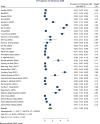
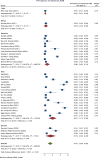
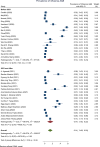
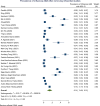

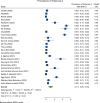

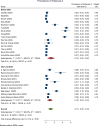


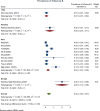


Similar articles
-
Folic acid supplementation and malaria susceptibility and severity among people taking antifolate antimalarial drugs in endemic areas.Cochrane Database Syst Rev. 2022 Feb 1;2(2022):CD014217. doi: 10.1002/14651858.CD014217. Cochrane Database Syst Rev. 2022. PMID: 36321557 Free PMC article.
-
Antibody tests for identification of current and past infection with SARS-CoV-2.Cochrane Database Syst Rev. 2020 Jun 25;6(6):CD013652. doi: 10.1002/14651858.CD013652. Cochrane Database Syst Rev. 2020. Update in: Cochrane Database Syst Rev. 2022 Nov 17;11:CD013652. doi: 10.1002/14651858.CD013652.pub2. PMID: 32584464 Free PMC article. Updated.
-
Physical interventions to interrupt or reduce the spread of respiratory viruses.Cochrane Database Syst Rev. 2020 Nov 20;11(11):CD006207. doi: 10.1002/14651858.CD006207.pub5. Cochrane Database Syst Rev. 2020. Update in: Cochrane Database Syst Rev. 2023 Jan 30;1:CD006207. doi: 10.1002/14651858.CD006207.pub6. PMID: 33215698 Free PMC article. Updated.
-
The epidemiology and clinical characteristics of co-infection of SARS-CoV-2 and influenza viruses in patients during COVID-19 outbreak.J Med Virol. 2020 Nov;92(11):2870-2873. doi: 10.1002/jmv.26163. Epub 2020 Jul 6. J Med Virol. 2020. PMID: 32530499 Free PMC article.
-
Immunopathological similarities between COVID-19 and influenza: Investigating the consequences of Co-infection.Microb Pathog. 2021 Mar;152:104554. doi: 10.1016/j.micpath.2020.104554. Epub 2020 Nov 3. Microb Pathog. 2021. PMID: 33157216 Free PMC article. Review.
Cited by
-
Prevalence of Viral and Bacterial Co-Infections in SARS-CoV-2-Positive Individuals in Cyprus 2020-2022.Biomedicines. 2025 May 19;13(5):1236. doi: 10.3390/biomedicines13051236. Biomedicines. 2025. PMID: 40427063 Free PMC article.
-
Fungal Pulmonary Coinfections in COVID-19: Microbiological Assessment, Inflammatory Profiles, and Clinical Outcomes.Biomedicines. 2025 Apr 3;13(4):864. doi: 10.3390/biomedicines13040864. Biomedicines. 2025. PMID: 40299432 Free PMC article.
References
-
- Mousavi T, Moosazadeh M, Nadi Ghara AA, Haghshenas M, Roozbeh F. Estimating mortality incidence for the 2009 H1N1 pandemic: a Meta-analysis from 21 countries in the WHO Eastern Mediterranean Region. Curr Respiratory Med Reviews. 2018;14(4):218–26.
Publication types
MeSH terms
LinkOut - more resources
Full Text Sources
Medical
Miscellaneous

